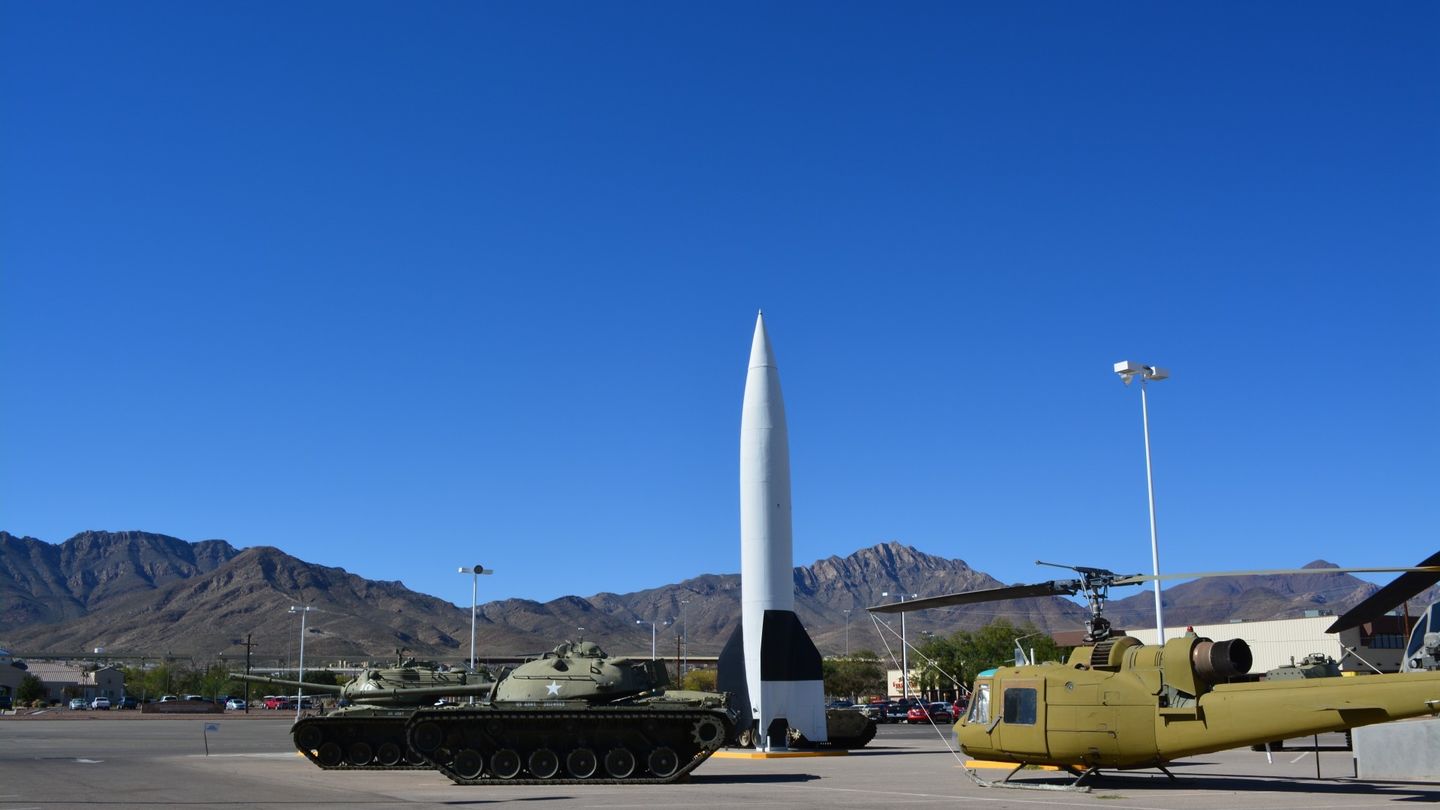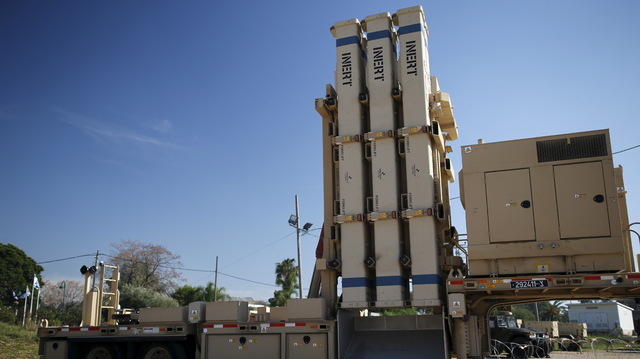Will Outer Space Be Weaponized?

This essay discusses the main elements of the American security document called the Missile Defense Review 2019, which was presented by the US Ministry of Defense in January 2019.
This essay discusses the main elements of the American security document called the Missile Defense Review 2019, which was presented by the US Ministry of Defense in January 2019. It covers the possible reasons for the postponed publication of the document and informs about the main legal documents dealing with the peaceful use of space. It compares the current document with the similar one from 2010, which was published by the Obama administration. It also focuses on the possibility of the deployment of US spacebased interceptors in the Earth’s orbit. In this context it analyses the possible negative consequences of such a development, especially that it could lead to the beginning of a phase of a high risk weaponization of outer space and the start of an arms race in that domain.
MISSILE DEFENSE REVIEW 2019
The term the weaponization of outer space is generally understood as referring to the deployment of offensive means, including interceptors and laser weapons, in outer space. For example, the Strategic Defense Initiative (SDI) of the Republican president Ronald Reagan’s administration, also known as “Star Wars”, expected a deployment of space based interceptors (SBI). As is well known the project was not realised. Due to technological problems and enormous financial costs the SDI program was prematurely terminated.
In contrast, attempts at the military use of outer space have existed for a relatively long time. It involves using military satellites, and in some cases even commercial ones for military applications with an inoffensive and passive character, such as the early warning military satellites and sensors.
On January 17, 2019, after almost one year of the delay, the US Ministry of Defense published the security document Missile Defense Review 2019 (2019 MDR). The document was presented in the form of an executive summary because the original, more comprehensive version is classified.
The publication of the document coincides with Vice-President Mike Pence’s declaration from August 2018 announcing the planned creation of a new branch of the US military called the Space Force by 2020. It should be the sixth branch of the US military. Currently US military consists of the Army, the Air Force, the Navy, the Marine Corps and the Coast Guard. Today the Air Force is in charge of the military use of outer space. Already in May 2018 President Donald Trump supported the planned creation of the Space Force, and in connection with it, he put emphasis on maintaining the US dominance in space. The US Congress is to discuss the plan and make the final decision on whether it will be authorized. If the plan is authorized, Congress should provide about 8 billion USD for the creation of the new branch during the next five-year period.
Vice-President Mike Pence, Security Adviser John Bolton, Acting Defense Secretary Patrick Shanahan and even President Donald Trump himself took part in the January presentation of the 2019 MDR document at the US Ministry of Defense. President Trump announced in his speech, among other things, that “the goal is simple. It is to ensure we can detect and destroy any missile launched against the United States, anytime, anywhere and any place”. He stressed the necessity to build the missile defense in connection with taking into account the increasing threats posed by the main challengers to the US – the Russian Federation (RF) and the People’s Republic of China (PRC) and the so-called rogue states such as Iran and the DPRK. He also drew attention to the six main priorities in this sphere.
The first priority is the construction of 20 new ground-based interceptors (GBIs), which will bring the total to 64 interceptors. Currently 40 GBIs are located at Fort Greely, in Alaska, and 4 are at Vandenberg Air Force Base, in California. The second priority is the orientation of the US Ministry of Defense towards developing new missile defense technologies, such as more powerful sensors and radars to detect missile launches and track them, which is a necessary precondition for the taking of the appropriate countermeasures. The third priority is the missile defense against the emerging systems of the most advanced cruise missiles with a flat flight path and hypersonic weapons which fly at speeds many times higher than the speed of sound. As the fourth priority, President Trump stated that a big part of the future Department of Defense budgets will go toward problems connected with outer space from the perspective of both defense and offensive capabilities. As Trump said “… we will terminate any missile launches from hostile powers […] regardless of the missile type or the geographic origins of the attack…”. The fifth priority is the commitment to the elimination of bureaucratic obstacles hindering the speedy deployment of missile defense technologies. The sixth, final priority is the cooperation between the US and its allies on missile defense protection. In connection with this, the USA will give preference to these allies when it comes to sales of the American missile defense systems and technologies. The US will also share with them the results of its systems of early warning and tracking of launched missiles.
PROBABLE REASONS FOR THE PUBLISHING DELAY OF THE 2019 MDR DOCUMENT
The wider context leads to the possible conclusion that one of the main reasons of the almost one-year delay of the publishing of the 2019 MDR could be not only the declared rising missile threats from Iran and the DPRK, but especially the Russian president Vladimir Putin’s March 2018 speech. In it, Putin informed about the six newest, allegedly unrivalled Russian weapons systems, which are gradually being incomporated into the Russian armed forces. President Putin described this step as a reply to the building of the US missile defense. When talking about the new weapons systems, he mentioned, for example, an underwater drone with nuclear propulsion, laser weapons, hypersonic cruise missiles and so on. Another reason for the delay could be China’s announcement of November 2018 about the successful test of its hypersonic guided missile, which flies several times faster than the sound.
It cannot be ruled out that Putin’s presentation and the Chinese announcement were given at their precise times as a reaction to other US security documents, which were oriented towards carrying out policies from a position of strength and maximum pressure. In these documents, focusing, among other things, on the qualitative improvement of nuclear weapons and maintaining of the US military supremacy, the RF and the PRC were declared as the main challengers of the dominant position of the United States in the world and as revisionist and rival powers making efforts in favour of creating a multipolar world order. Furthermore, Russia was also accused of trying to provoke a limited military conflict in the European theatre of war with the use of low-yield nuclear weapons mainly in connection with the possible Russian breach of the INF Treaty. Russia refused the accusation and in turn accused the United States of breaching the INF Treaty, which prohibits ground-launched shorter and middle range missiles. (Note by the author: at the beginning of February 2019, first President Trump and then President Putin respectively declared the US and the RF’s withdrawal from the INF Treaty.)
THE COMPARISON OF THE MISSILE DEFENSE REVIEW 2019 WITH THE SIMILAR DOCUMENT OF THE OBAMA ADMINISTRATION OF 2010
When comparing the current 2019 MDR with the Ballistic Missile Defense Review 2010 (2010 BMDR) some arms control experts mention a certain degree of continuity but simultaneously stress some differences between them. For example, leaving out the word “ballistic” in the title of the new document indicates the change of the security environment and the extension of the defense to include current threats, which are presented mainly by hypersonic cruise missiles with a flat flight path and hypersonic glide vehicles (HGVs). The 2010 BMDR was also mainly oriented toward the regional missile defense and the building of the missile defense capacity on US territory against limited potential missile threats from the DPRK and Iran.
In relation to Iran the Obama administration also took into consideration the negotiated limits imposed on the Iranian nuclear program, which resulted in the conclusion in 2015 of the multilateral so-called Iranian Nuclear Deal (Joint Comprehensive Plan of Action, JCPOA). However, in May 2018 the Trump administration ended the US participation in the deal. In relation to Russia and China the Obama administration was interested in talks on missile defense. The continuity between the documents lies in the fact that both documents are dealing with the Russian and Chinese missile threats by referring to the American nuclear weapons deterrent. However, the 2019 MDR definitely marks both of these countries, in accordance with other security documents, as the main challengers of the United States that, together with the so-called rogue states (North Korea and Iran), represent missile security threats for the US.
THE INTERNATIONAL LEGAL REGIME FOR THE USE OF OUTER SPACE
Outer space and celestial bodies are ranked, together with the open sea, the seabed beyond national jurisdiction and Antarctica, among the international uninhabited domains. From the international law point of view and in terms of the application of the national jurisdiction there are two main principles guiding the use of the mentioned domains: the ban on their ownership and the right to use them peacefully.
The Treaty Banning Nuclear Weapons Test in the Atmosphere, in Outer Space and under Water, well known as the Partial Test Ban Treaty (PTBT) of 1963, is one of the main legal instruments in this regard. As it concerns the building of the antimissile defense, the importance of the PTBT lies in its ban on the use of missile interceptors tipped with nuclear warheads. However it doesn’t prohibit other possible forms of deployment of offensive means in outer space, e.g. laser weapons or interceptors with a kinetic destruction capacity.
The Treaty on Principles Governing the Activities of States in the Exploration and Use of Outer Space, including the Moon and Other Celestial Bodies, also known under the shorter title the Open Space Treaty (OST) of 1967, contains legal norms creating the foundation of the legal regulation of the use of outer space and celestial bodies. It can be generally stated that the OST lays down the regime of the partial non-weaponization of outer space and the full non-weaponization of the Moon and other celestial bodies. It is true that the OST prohibits the deployment of mass destruction weapons in outer space, but, for example, it enables flights of missiles tipped with nuclear warheads through the Earth’s orbit and the possible deployment of non-mass destruction weapons systems in outer space. However, the OST prohibits the deployment of any and all weapons, not only mass destruction weapons on the Moon and other celestial bodies. The Agreement Governing the Activities of States on the Moon and Other Celestial Bodies, known as the Moon Agreement (hereinafter the MA) of 1979 further extends the mentioned regime to the full non-weaponization of the Moon and other celestial bodies of our solar system. It prohibits the use of the Moon for any use of force or threat of force and for any hostile actions or threats of carrying out such actions against the Earth, the Moon, space objects and spacecrafts including their crews.
There are further legal instruments partially dealing with the matter – among others, the Convention on the Registration of Objects Launched into Outer Space (CR) of 1975, the Convention on the Prohibition of Military or Other Hostile Use of Environmental Modification Techniques (ENMOD) of 1977, and the International Telecommunication Constitution and Convention (ITU) of 1992.
Besides the multilateral international legal instruments a significant role was also played by various bilateral American-Soviet treaties. Among them a special role was performed by the Treaty on the Limitation of Anti-Ballistic System (ABM) of 1972. The ABM made it impossible to carry out a first use of nuclear weapons in the framework of the so-called Mutual Assured Destruction (MAD) concept. Among other measures, the parties to the ABM were prohibited from developing, testing and deploying antimissile capacities in the sea, in the air and in outer space. In 2002 the Republican administration of President George W. Bush decided to withdraw from the ABM. The US justified this step by pointing to the need to eliminate limits on tests of new components of its missile defense. After its withdrawal from the ABM the US started the process of building the missile defense on its own soil and also in the European region in cooperation with NATO.
CONCLUSIONS AND OTHER ANTICIPATED DEVELOPMENTS
The publication of the 2019 MDR closes the series of the principal security documents published by the Trump administration at the end of 2017 and the beginning of 2018. The others are the National Security of the United States of America of December 2017, and the Summary of the 2018 National Defense Strategy of the United States of America of January 2018, which is only a summary because the full version of the strategy is classified. The Nuclear Posture Review of the United States of America, published in early February 2018, has a similar summary form.
According to Thomas Karako, the Director of the Missile Defense Project at the Center for Strategic and International Studies in Washington, the 2019 MDR shows “heavy influence of and continuity with the doctrinal developments by the Joint Staff in recent years, including from 2013 and 2017”. The document is also the first to connect Russia and China with missile and nuclear threats. It states that the US will continue to oppose these threats mainly by relying on its nuclear deterrence, just as it did up until now. Also, Karako mentioned the support for the creation of the Space Sensor Layer (SSL) as one of the most significant actions listed in the 2019 MDR.
A significant feature of the 2019 MDR is that it neither cancels any major programs in relations to the declared new security threats nor announces the beginning of any new ones. It rather puts the emphasis on the prognosis of the strategic environment, and on the necessity to increase the quality and mobility of the antimissile means and their dispersal. On the basis of the document’s tasks addressed to relevant organs and the U.S. military branches, including the Missile Defense Agency and STRATCOM, these organs and branches are to present analytical studies or plans in a time frame from six to nine months on how to oppose new threats, mainly hypersonic missile threats. With regards to the threat of weaponizing of outer space, an example of such a task is the preparation of a study on the development and operational deployment in space of a layer of space-based interceptors. Among other things, this relates to the renewed emphasis on new technologies and an interest in solving the long-term problem of destroying missiles in their boost phase, in comparison with the currently preferred practice of destroying long-range and midcourse missiles in their terminal high altitude.
The document does not include data about the place and the time framework of the deployment of the mentioned 20 new interceptors and it also lacks any mention of planned reactions to possible cyber-attacks against elements and facilities of the missile defense.
The publishing of the 2019 MDR and some of President Trump’s declarations that de facto cast doubts on the long-term policy of the United States, and the document’s claims justifying the modernization of the missile defense system on US territory and in the European region against the missile threats of the so-called rogue states (Iran, the DPRK), came at a time of an escalation of the crisis development in the American-Russian arms control architecture. So far there wasn’t any forthcoming signal from the US side that it aims to solve the deepening security problems with the RF and the PRC, for example, in the form of negotiations between arms control experts with the aim to discuss and approve some mutual confidence-building measures. On the contrary we are witnessing the US’s effort to act from a position of strength, e.g. by declaring ultimatum-like demands and stressing its focus on the long-term maintenance of the military supremacy of the US as the world’s hegemon in the security sphere, including outer space.
At the Geneva Conference on Disarmament’s sessions devoted to one of the four principle programme items namely the Prevention on an Arms Race in Outer Space (PAROS) there has been no significant progress. The Russian-Chinese draft of a legally binding treaty has not gained the necessary support so far, and the EU countries’ efforts to approve the global voluntary instrument the International Code of Conduct for Outer Space Activities (ICoC), including a ban on the testing of antisatellite weapons (ASAT), is still under discussion and the discussions have not been developing favorably.
We can for certain expect that the possible expanding of the US missile defense, including the deployment of antimissile assets in outer space, will lead to the similar radical measures on the part of Russia and China. Besides the negative consequences of this for the peaceful use of outer space, which is characterized by an increasing number of space users and the growth of so-called space debris, it cannot be ruled out that similar steps will be taken by other countries with developed space programs. (Note by the author: in March 2019 India succesfully shot down its own satellite flying on the Earth’s low orbit and thus became the fourth country, after the US, the RF and the PRC, which demonstrated that it had ownership of a ground-based anti-satellite system – ASAT.)









